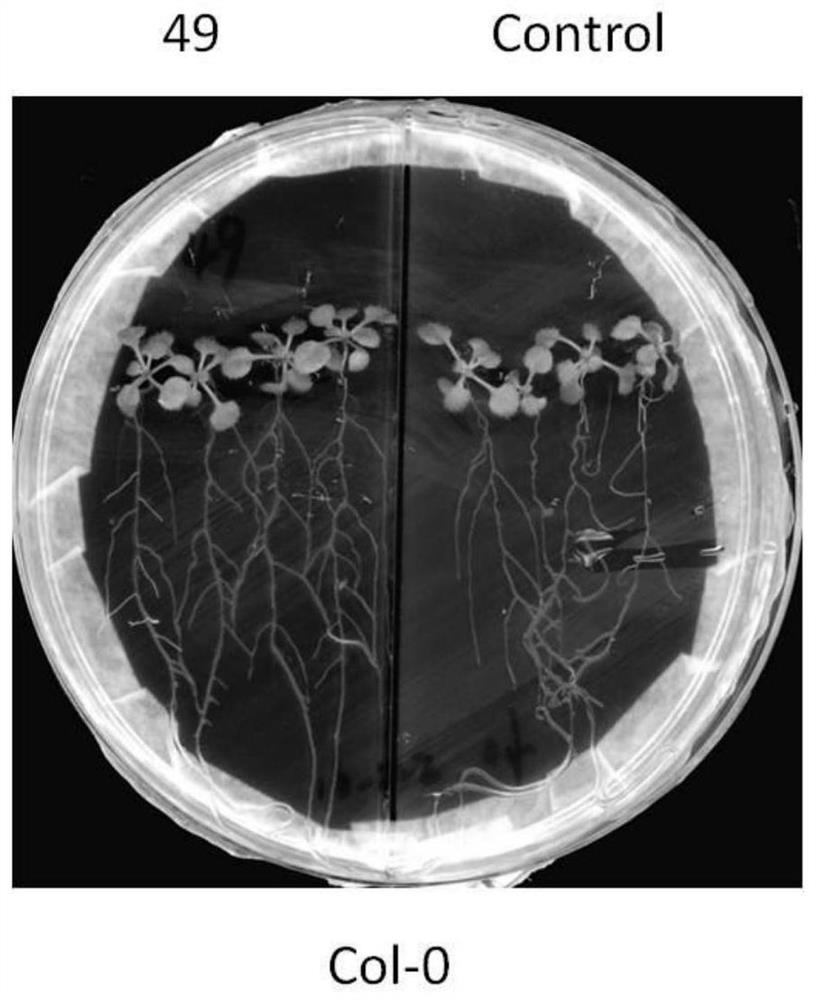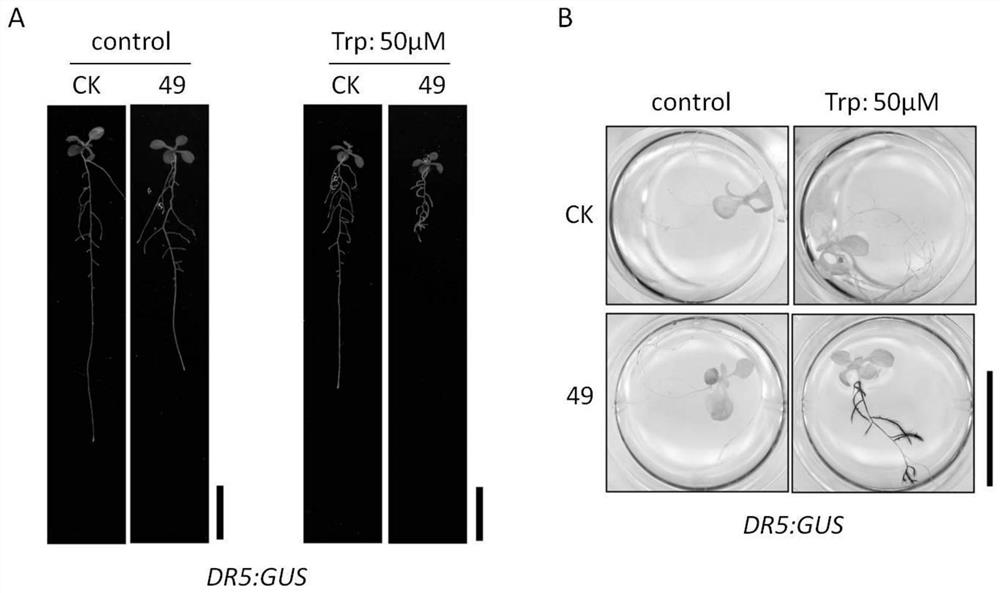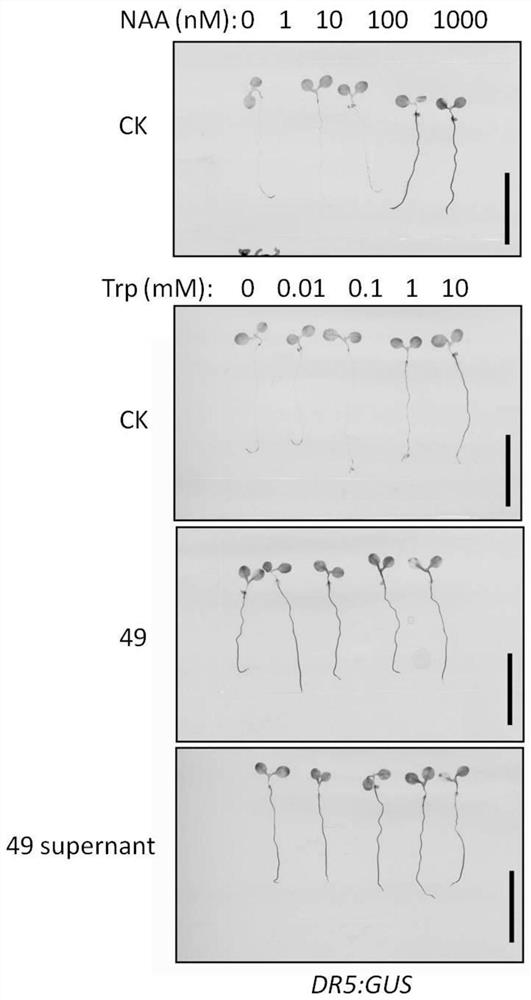Enterobacter cloacae strain and application thereof
A technology of Enterobacter cloacae and strains, applied in the field of microorganisms, can solve the problems of soil acidification, soil hardening and hardening, reduction of oxygen content, etc., and achieve the effects of promoting plant growth and development, promoting occurrence and elongation, and increasing yield
- Summary
- Abstract
- Description
- Claims
- Application Information
AI Technical Summary
Problems solved by technology
Method used
Image
Examples
Embodiment 1
[0024] The source of embodiment 1, bacterial strain and separation, identification
[0025] The inventors of the present application isolated and obtained strain 49 from the rhizosphere soil microbial bacterial bank in Dongying Salt Land. By observing the morphological characteristics of strain 49, combined with its 16S rDNA sequence and homology analysis, it was identified that strain 49 was cloacae. Bacillus ( Enterobacter cloacae ); at the same time, its function in promoting plant root development and promoting plant growth and development was studied.
[0026] (1) Morphological observation of strain 49
[0027] Streak 49 on LB solid medium, culture at 30°C for 12-24 hours, observe the colony morphology and stain the strain 49 in the logarithmic growth phase with Gram staining method, and then observe Enterobacter cloacae strains through an optical microscope 49 morphological features.
[0028] It was found by observation that the single colony of bacterial strain 49 w...
Embodiment 2
[0036] Example 2, Experimental Research on the Promotion of Arabidopsis Lateral Root Development by Enterobacter cloacae Strain 49
[0037] The seeds of Arabidopsis thaliana were sterilized, cultured on the plate for 5 days, and transferred to a two-part petri dish, inoculated with Enterobacter cloacae strain 49, and cultured vertically. Half of the Arabidopsis seedlings in the two-part petri dish were the control (control), and the other half were Arabidopsis seedlings inoculated with strain 49, and the plant phenotype was observed after co-cultivation for 5 days. It was found that compared with the control, Arabidopsis thaliana seedlings exhibited a slightly shorter main root but significantly more lateral roots after being treated with strain 49, as shown in figure 1 As shown, it was shown that strain 49 could promote the development of Arabidopsis lateral roots.
[0038] Among them, the disinfection and plate culture method of Arabidopsis seeds is as follows: take a certa...
Embodiment 3
[0040] Example 3. Experimental research on bacterial strain 49 relying on tryptophan to synthesize auxin and activating the auxin signaling pathway
[0041] Transgenic seedlings capable of responding to auxin signal levels grown in 1 / 2 MS (with 1% sucrose, 0.8% agar powder) for 5 days DR5:GUS Transfer to a new 1 / 2 MS two-part solid medium (containing 0.8% agar powder) containing and not containing 50 μM tryptophan, and inoculate strain 49 to the plant root system, (the specific plant cultivation and inoculation methods are the same as in Example 2 ) After continuing to culture for 5 days, the plant root phenotype was observed, and it was found that the lateral root density of Arabidopsis thaliana was significantly increased after inoculating strain 49 compared with the control; especially on the medium containing tryptophan, after inoculating strain 49, Plants showed phenotypes similar to those treated with high-concentration auxin, that is, the main root was significantly sh...
PUM
 Login to View More
Login to View More Abstract
Description
Claims
Application Information
 Login to View More
Login to View More - R&D
- Intellectual Property
- Life Sciences
- Materials
- Tech Scout
- Unparalleled Data Quality
- Higher Quality Content
- 60% Fewer Hallucinations
Browse by: Latest US Patents, China's latest patents, Technical Efficacy Thesaurus, Application Domain, Technology Topic, Popular Technical Reports.
© 2025 PatSnap. All rights reserved.Legal|Privacy policy|Modern Slavery Act Transparency Statement|Sitemap|About US| Contact US: help@patsnap.com



